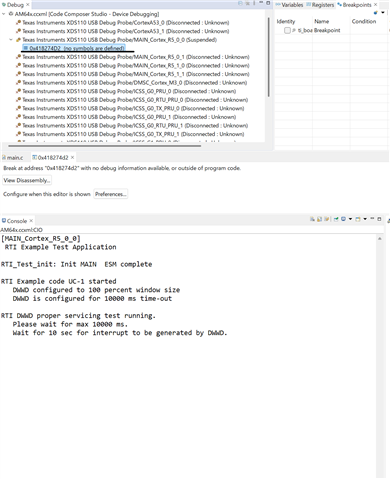Other Parts Discussed in Thread: AM6442, SYSCONFIG
Tool/software:
Hello TI support team.
I have a question about the WDT for AM6442 CR5.
I am using mcu_plus_sdk_am64x_08_06_00_45 as the SDK.
I would like to use the WDT in microsec order rather than millisec order.
For example, I would like to clear the WDT every 50us.
Looking at the API's Watchdog_Params, there is the following parameter:
"uint32_t Watchdog_Params::expirationTime"
This unit is milliseconds, but could you please tell me how to set it in microseconds?
Also, please let me know if there is any sample code for resetting the CPU with the WDT.
Best regards,
Kiyomasa Imaizumi.








